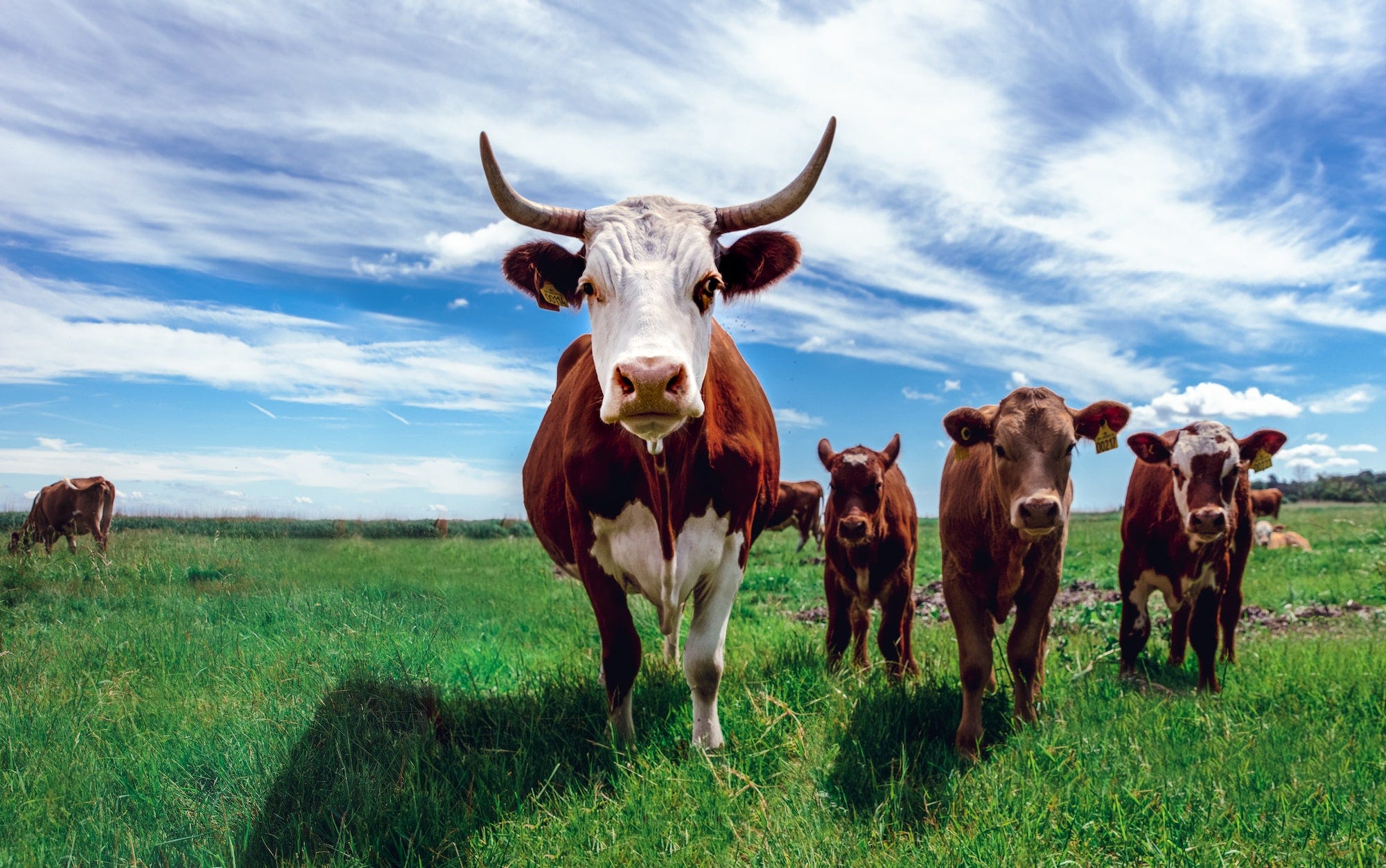From Fungi to Frame-Size
In this week's R2R publication: We get a reminder of why mycotoxins are important to test for before putting feed into the bunk. Analysis helps us understand how to better breed/select for more efficient cows. (Hint: it's not only bodyweight).

In this weeks R2R publication:
- We get a reminder of why mycotoxins are important to test for before putting feed into the bunk.
- Analysis helps us understand how to better breed/select for more efficient cows. (Hint: it's not only bodyweight)
- After many years of sexed semen use, let's take a look at the impacts it has made in our industry.
What's in your wallet ration?

TL;DR:
- Mycotoxins are byproducts of fungi, which can show up in feeds
- Mycotoxins were fed to beef steers for 21 days at levels that were realistic for a feedlot ration
- The treatment had upregulated pathways associated with oxidative stress and inflammation
What you need to know: Mycotoxins are byproducts of fungi, which can show up in feeds that fungus have made their home. Their presence is not just a red hue or an off-smell, but can also affect an animal's health and performance. For example, these mycotoxins were shown to impact things like the animal's immune system, the repair and function of their cells, and can even be toxic to the liver.
Two common mycotoxins, both produced by a common fungus called Fusarium, were fed to beef steers for 21 days at realistic levels to those fed in a run-of-the-mill feedlot ration. Scientists did this to see how these toxins affected cattle when fed at real-life doses.
When looking internally, after 21 days, the consumption of the mycotoxins appears to have compromised the animal's immune system, and their body was using many of its resources to keep the toxin at bay. Namely, pathways that are associated with oxidative stress and inflammation had been upregulated by the treatment.
Using resources to fight off toxins takes away from the animal's ability to put energy towards growth and marbling. And based on the dosages of the toxins fed, animals consuming mycotoxins at realistic levels can develop side effects that impact their health and performance.
The important asterisk*:
- Only 12 animals were used in this experiment. Which is a limited representation of all cattle–more animals would be preferable.
- Other mycotoxins were present in the feed samples, but they were at negligible levels.
Industry Application: Mycotoxins are not a threat to ignore and may be worth testing for to avoid negative impacts on the performance of your herd. Also, precautions can be taken to prevent the growth of mycotoxins in feedstuffs, like adequately packing the silage pit, harvesting only when the moisture is correct, and using fermentation aids.
Read more about it: Effects of Deoxynivalenol and Fumonisins Fed in Combination to Beef Cattle: Immunotoxicity and Gene Expression.

Everything in moderation
TL;DR:
- The goal to decrease inputs has driven the cow/calf industry towards selecting more moderate-framed females.
- Selecting for lower body weight could result in selecting for thinner cows instead of smaller cows.
- The combination of a thinner cow with a fast-growing calf could have detrimental effects on the body condition score of the dam.
What you need to know:
As cattle producers attempt to decrease their input costs, many look towards the maintenance requirements of their cows. This goal has driven the industry towards selecting more moderate-framed females, as the smaller animals require less feed to maintain a healthy body condition score.
Genetic selection towards moderate-sized females has been met with industry concerns over its effect on cow productivity, as the industry is also breeding for fast-growing calves. Specifically, the concern is that a taller and thinner cow could have a similar reported weight as a shorter and fatter cow but is likely to require more feed to maintain a healthy body condition score.
The combination of a larger, thinner cow with a fast-growing calf could have detrimental effects on the body condition score of the dam. And there is no currently breeding value that allows for the selection of body condition scores. Although, this data is collected and used in breeding values, like the EPD value indexes of the Angus and Hereford associations.
In the 11 cattle herds evaluated, the live weight of a cow was associated with a higher body condition score–meaning that lower body weights also mean lower condition scores–reinforcing the concerns that selecting for lower body weight could result in selecting for thinner cows instead of smaller cows.
Although there is an association between the body weight and condition score, similar to how weaning weight and yearling weight are related, breeders can select for higher body condition scores and smaller frame sizes at the same time.
The important asterisk*:
- This project was conducted in Australia, and although they have very similar practices to the US, their meat grading system has a few differences, which could drive selection for different genetics.
Industry Application: Selecting for moderate-frame size through EPDs could result in ranches retaining and buying thinner females instead of smaller-framed females. A way to avoid this would be to track the body condition scores of heifers and cows and body weights, which will ensure that the animals kept are smaller framed instead of large and thin.
Read more about it: Selection strategies for beef cow size and condition.
Sexed semen: historical impact and future opportunity

TL;DR:
- Nearly 20 years of commercial sexed-semen use.
- The "beef-on-dairy" matings, dairy cows bred with beef semen, have increased in popularity.
- The beef industry has an opportunity to simultaneously select for improvements in female fertility and male feedlot performance.
What you need to know: We are nearing 20 years of commercial sexed-semen availability, and it is time to look back on what it has done for the cattle industry–both the beef and dairy industries. Combining these two industries in this section is especially relevant because of how intertwined sexed semen has made them since its inception (or conception?).
The "beef-on-dairy" matings, dairy cows bred with beef semen, have increased in popularity over the past 20 years. These breedings programs involve using female-sexed-semen on younger and higher-quality females to get high-quality replacement heifers, and unsexed-beef-semen for the older and less "relevant" cows to produce the beef-on-dairy calves.
The benefits: all semen ensured cows are pregnant and lactate, female genetics are quickly improved, fewer unneeded dairy bulls and heifers produced, and beef calves derive additional value when entering the feedlots.
There are many other uses for sexed-semen in the beef industry, with the most prominent use-case being male-sexed-semen. Bulls can be worth twice the value of their heifer counterparts in purebred operations–driving interest in using this technology when performing in-vitro fertilization to increase the number of bulls born each season.
Another hypothetical opportunity is the ability to simultaneously select for improvements in female fertility and male feedlot performance. This can be done by choosing matings based on the predetermined calf sex, for instance, selecting the sire specifically for the offspring's purpose (breeding or feeding).
Industry Application: Sexed-semen premiums have been decreasing over the years, and the pregnancy rate has increased. These combined factors open the door for opportunities, like selecting matings based on goals, like growth for sexed-semen-sired bull calves, and fertility for sexed-semen-sired heifers.
Read more about it: Applications and world-wide use of sexed semen in cattle.
